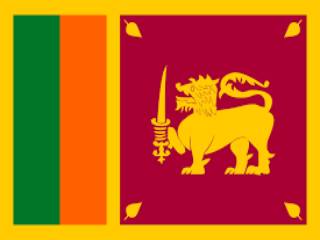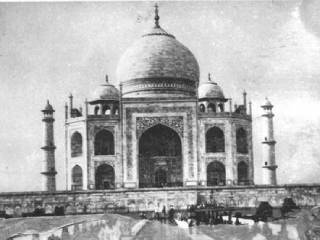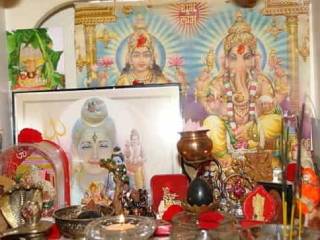Ashwin Krushna Shashthi/Saptami
By Francois Gautier
Indian media went into a tizzy while covering the canonisation of Sister Alphonsa, an obscure nun, to prove its secular credentials! Indian journalists forget that this country has had other women saints too.
As a Frenchman, I was coached right from childhood that logic, what we in France call cartesianism, is the greatest gift given to man and that one should use one’s reason to tread in life. Thus, I taught to my students in a Bangalore school of journalism, the SSCMS, that the first tool of a good reporter is to go by his or her own judgement on the ground, with the help of one’s first-hand experience — and not go by second hand information: What your parents thought, what you have read in the newspapers, what your caste, religion, culture pushes you into…
Yet in India, logic does not seem to apply to most of the media, especially when it is anything related to Hindus and Hinduism. One cannot, for instance, equate Muslim terrorists who blow up innocent civilians in market places all over India to angry ordinary Hindus who attack churches without killing anybody. We know that most of these communal incidents often involve persons of the same caste — Dalits and tribals — some of them converted to Christianity and some not.
However reprehensible was the destruction of the Babri Masjid, no Muslim was killed in the process. Compare that with the ‘vengeance’ bombings of 1993 in Mumbai, which killed hundreds of innocent people, mostly Hindus. Yet Indian and Western journalists keep equating the two, or even showing the Babri Masjid destruction as the most horrible act of the two.
How can you compare the Sangh Parivar with the Indian Mujahideen, a deadly terrorist organisation? How can you label Mr Narendra Modi a mass killer when actually it was ordinary middle class, or even Dalit Hindus, who went out into the streets in fury when 56 innocent people, many of them women and children, were burnt in a train?
How can you lobby for the lifting of the ban on SIMI, an organisation which is suspected of having planted bombs in many Indian cities, killing hundreds of innocent people, while advocating a ban on the Bajrang Dal, which attacked some churches after an 84-year-old swami and his followers were brutally murdered?
There is no logic in journalism in this country when it applies itself to minorities. Christians are supposedly only two per cent of the population in India, but look how last Sunday many major television channels showed live the canonisation ceremony of Sister Alphonsa, an obscure nun from Kerala and see how Union Minister Oscar Fernandes led an entire Indian delegation to the Vatican along with the Indian Ambassador. It would be impossible in England, for instance, which may have a two per cent Hindu minority, to have live coverage of a major Hindu ceremony, like the anointment of a new Shankaracharya. What were the 24×7 news channels, which seem to have deliberately chosen to highlight this non-event, trying to prove? That they are secular? Is this secularism?
The headline of the story "India gets its first woman saint", run by many newspapers, both Indian and Western, is very misleading.
For India has never been short of saints.
The woman sage from over 3,000 years ago, Maithreyi, Andal, the Tamil saint from early in the first Millennium CE and Akkamahadevi, the 15th century saint from modern-day Karnataka, are but a few examples of women saints in India.
What many publications failed to mention in the story is that this is the first woman Christian saint — not the first Indian woman saint.
This statement is ok, when it comes, for instance, from the BBC, which always looks at India through the Christian prism (BBC ran a few months back an untrue and slanderous documentary on Auroville), but when it comes to the Indian media, it only shows the grave lack of grounding in Indian culture and history of most Indian journalists.
As a result, they suffer from an inferiority complex.
This inferiority complex, as expressed by television’s live coverage of the canonisation of Sister Alphonsa, is a legacy of the British, who strove to show themselves as superior and Indian culture as inferior (and inheritor of the ‘White Aryans’, a totally false theory).
Is it not time to institute schools of journalism, both private and public, where not only logic will be taught, but where students shall be made aware of Indian history and of the greatness of Indian culture, so that when they go out to report, they will use their own judgement and become Indian journalists, with a little bit of feeling, pride and love for their own country?
Source: indiaview.wordpress.com

 Mizoram: EC accepts Christians’ demand to defer counting on Sunday, but what if Hindus had made a similar demand?
Mizoram: EC accepts Christians’ demand to defer counting on Sunday, but what if Hindus had made a similar demand? Sign Petition : Immediately repeal the draconian and unconstitutional ‘The Waqf Act, 1995’
Sign Petition : Immediately repeal the draconian and unconstitutional ‘The Waqf Act, 1995’ Shriram : Sri Lanka’s saviour
Shriram : Sri Lanka’s saviour Why it is so cool to malign Hindu gods and goddesses, but it may not be that easy now
Why it is so cool to malign Hindu gods and goddesses, but it may not be that easy now Shocking Truth of Taj Mahal exposed by Late Pujya P. N. Oak
Shocking Truth of Taj Mahal exposed by Late Pujya P. N. Oak How are Hindus treated in states where they are in a minority?
How are Hindus treated in states where they are in a minority?